
Lisa Grossman is the astronomy writer for Science News. Previously she was a news editor at New Scientist, where she ran the physical sciences section of the magazine for three years. Before that, she spent three years at New Scientist as a reporter, covering space, physics and astronomy. She has a degree in astronomy from Cornell University and a graduate certificate in science writing from UC Santa Cruz. Lisa was a finalist for the AGU David Perlman Award for Excellence in Science Journalism, and received the Institute of Physics/Science and Technology Facilities Council physics writing award and the AAS Solar Physics Division Popular Writing Award. She interned at Science News in 2009-2010.

Trustworthy journalism comes at a price.
Scientists and journalists share a core belief in questioning, observing and verifying to reach the truth. Science News reports on crucial research and discovery across science disciplines. We need your financial support to make it happen – every contribution makes a difference.
All Stories by Lisa Grossman
-
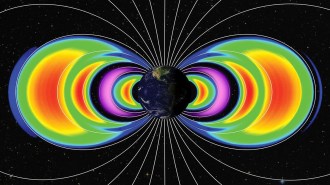 Space
SpaceEarth had new, temporary radiation rings last year
Two bands of radiation called the Van Allen belts encircle Earth. After a May 2024 solar superstorm, two more showed up between those belts.
-
 Science & Society
Science & Society‘Uncertain, anxious, fearful.’ That’s the mood at 2025’s first big U.S. science meeting
Scientists are losing funding and even their jobs under the new Trump administration. Researchers at the AAAS meeting shared fears and coping strategies.
-
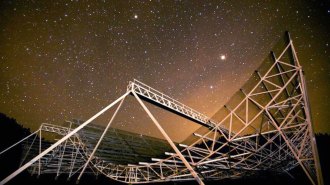 Astronomy
AstronomyA fast radio burst from a dead galaxy puzzles astronomers
A blast of radio waves from the outskirts of an ancient galaxy challenges theories about what creates such bursts.
-
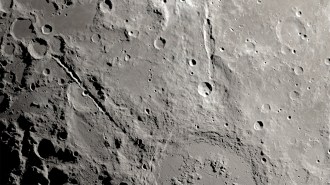 Planetary Science
Planetary ScienceThe moon’s two grand canyons formed in less than 10 minutes
Two gargantuan canyons on the moon were carved by a hailstorm of rocks — and that’s good news for future lunar astronauts.
-
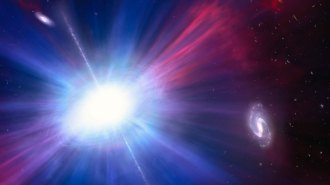 Astronomy
AstronomyA cosmic ‘Platypus’ might link two astronomical mysteries
A flash of light called the Platypus has hallmarks of a mid-sized black hole shredding a star and a type of burst thought to be a stellar explosion.
-
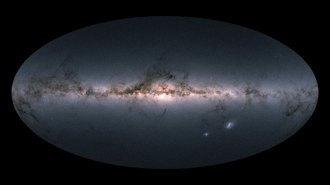 Astronomy
AstronomyGalactic chaos at cosmic noon may have stunted Milky Way planet formation
High radiation during a time of frenzied star formation in the Milky Way left one stellar population with few chances to form planets, a study reports.
-
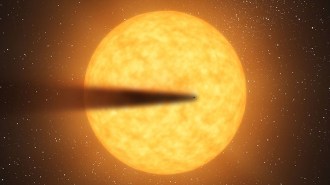 Planetary Science
Planetary ScienceA crumbling exoplanet spills its guts
Astronomers have determined the internal composition of a distant, disintegrating planet for the first time.
-
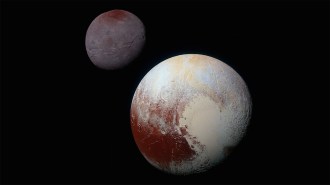 Planetary Science
Planetary SciencePluto may have captured its moon Charon with a kiss
When Pluto met Charon, there was an instant connection, new simulations suggest.
-
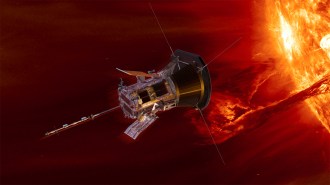 Space
SpaceNASA’s Parker Solar Probe survived its closest approach to the sun
The solar probe came within 6.1 million kilometers of the surface of the sun and lived to tell the tale.
-
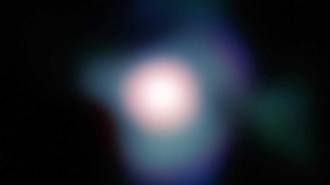 Space
Space50 years ago, astronomers saw the surface of a distant star for the first time
In the 1970s, technological advances let scientists peer through stars’ atmospheres. Now, scientists can measure roiling gas in the stars themselves.
-
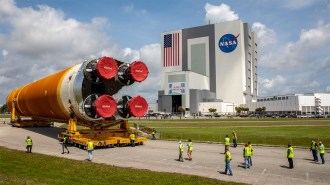 Space
SpaceWhat will space exploration look like under Trump?
A lot is unknown, but the roles of billionaires like Elon Musk and Jared Isaacman suggests a focus on human and private spaceflight.
-
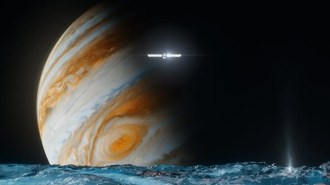 Space
SpaceSpace missions spanned the solar system in 2024
Humankind accomplished new feats in space this year, including scooping up some of the moon’s farside and launching a probe to Jupiter’s moon Europa.